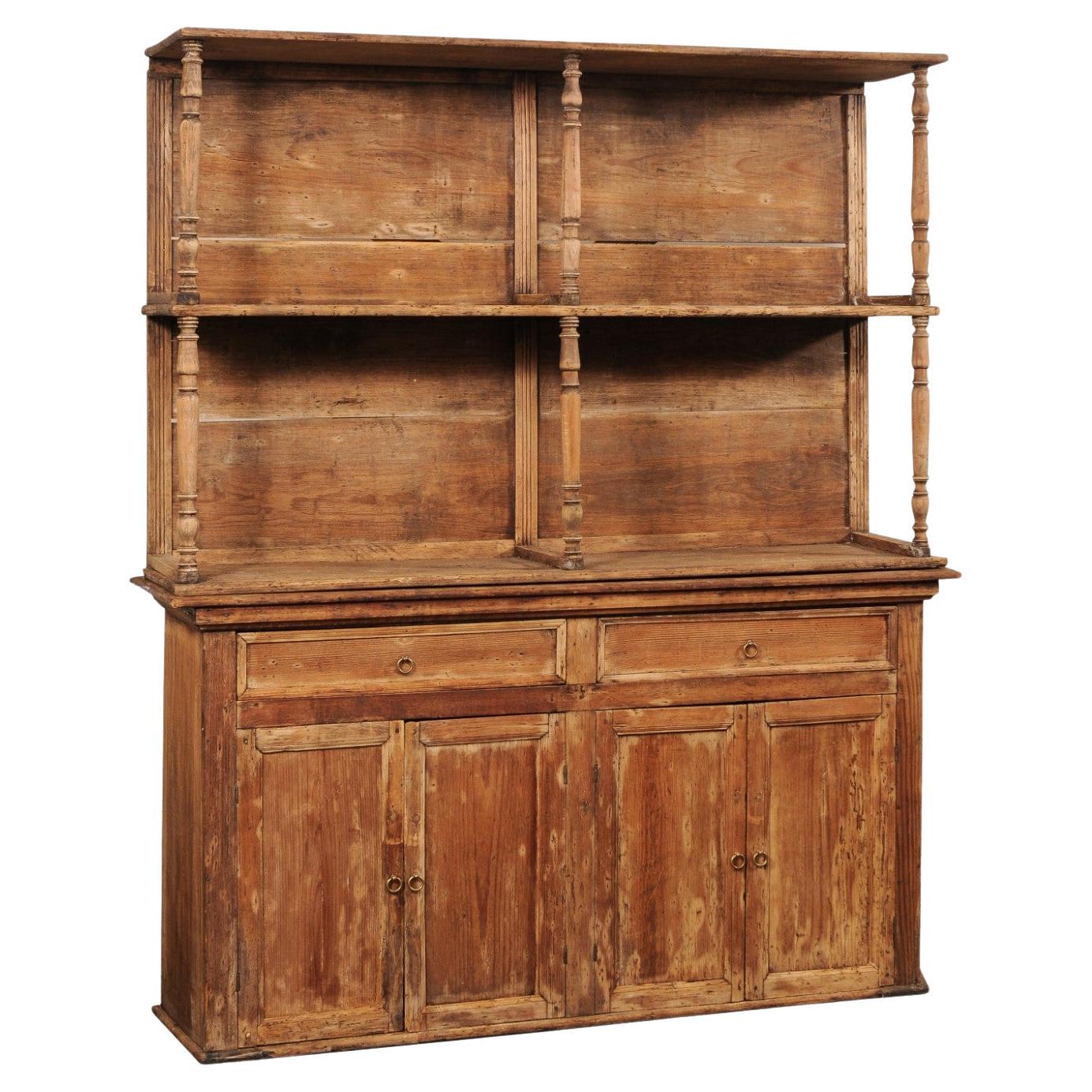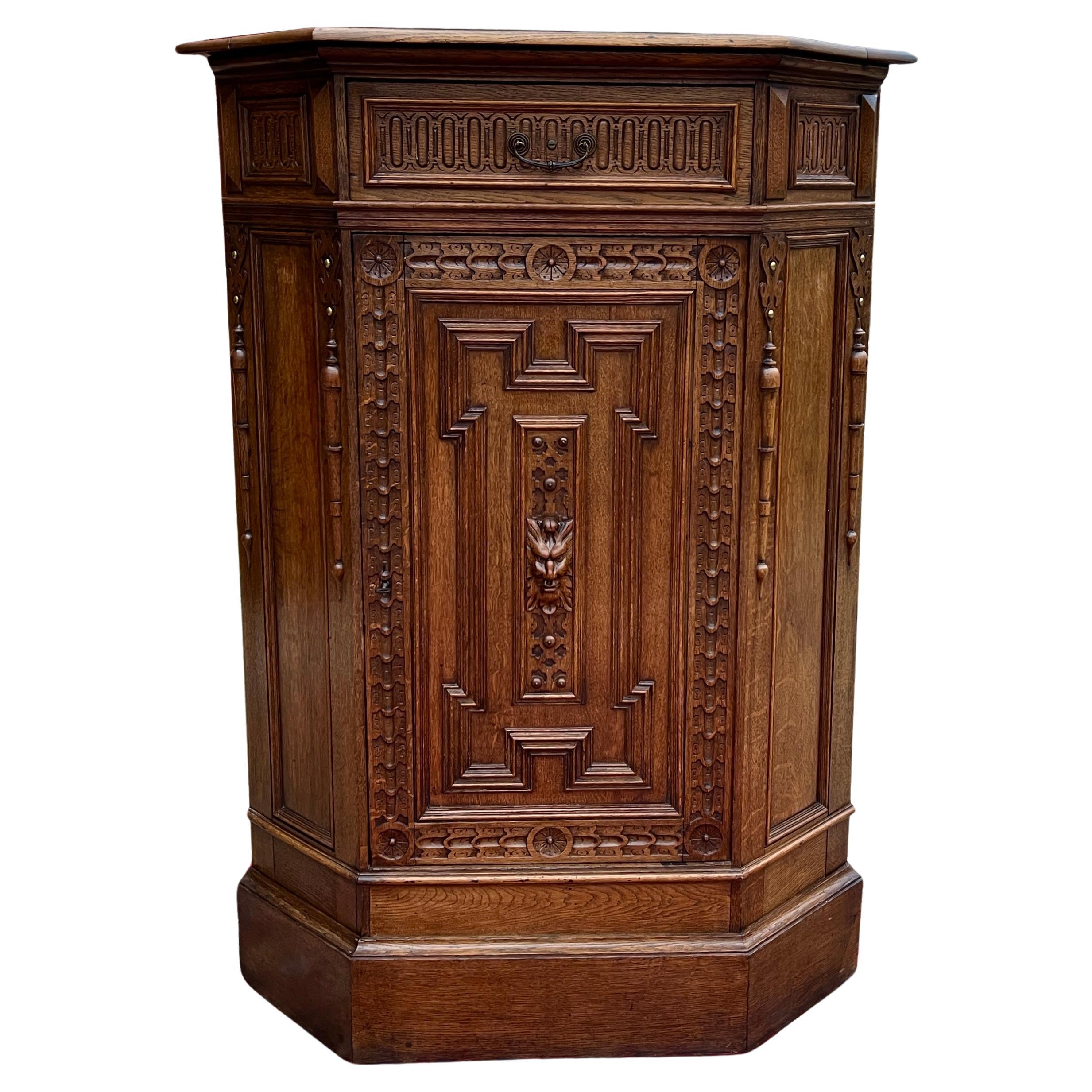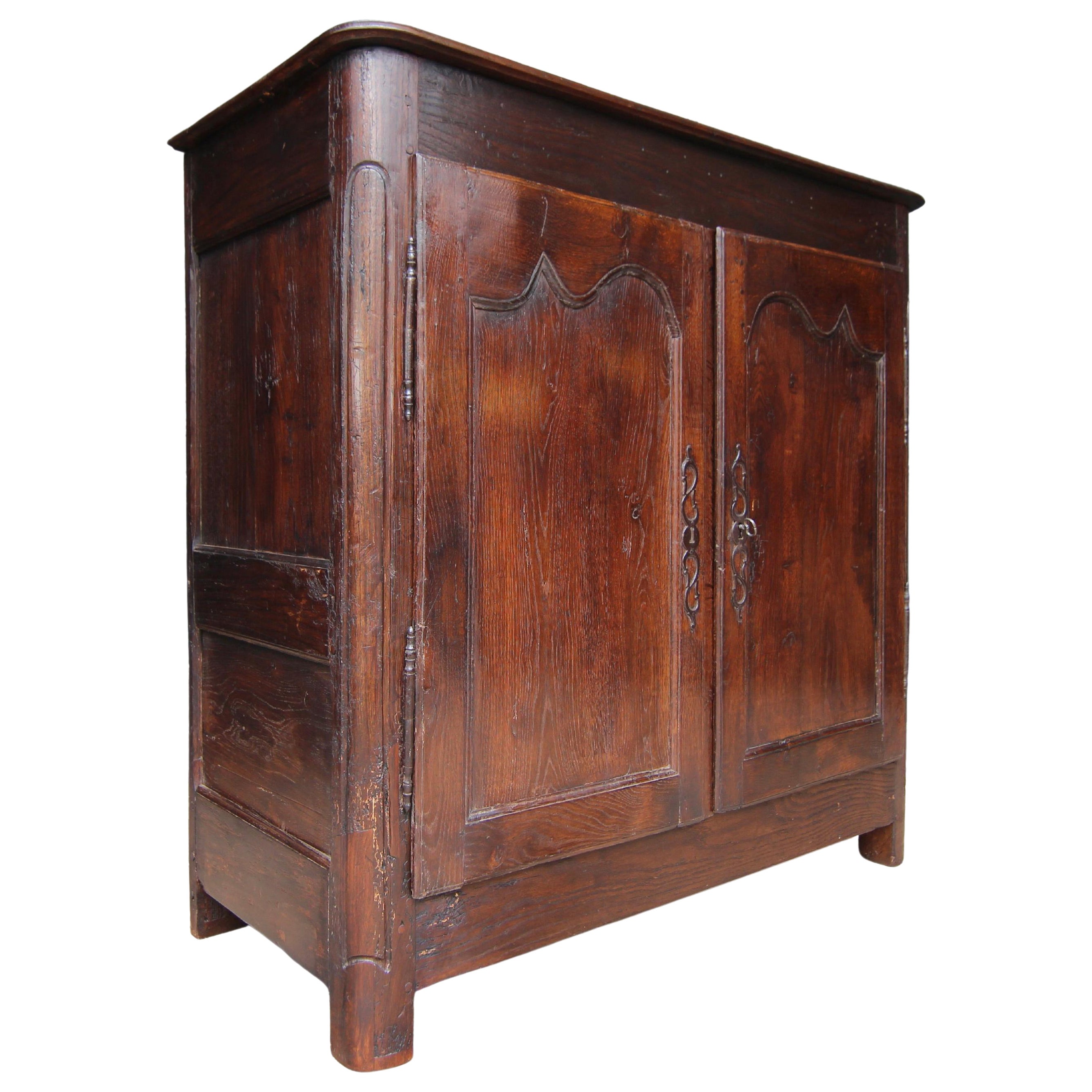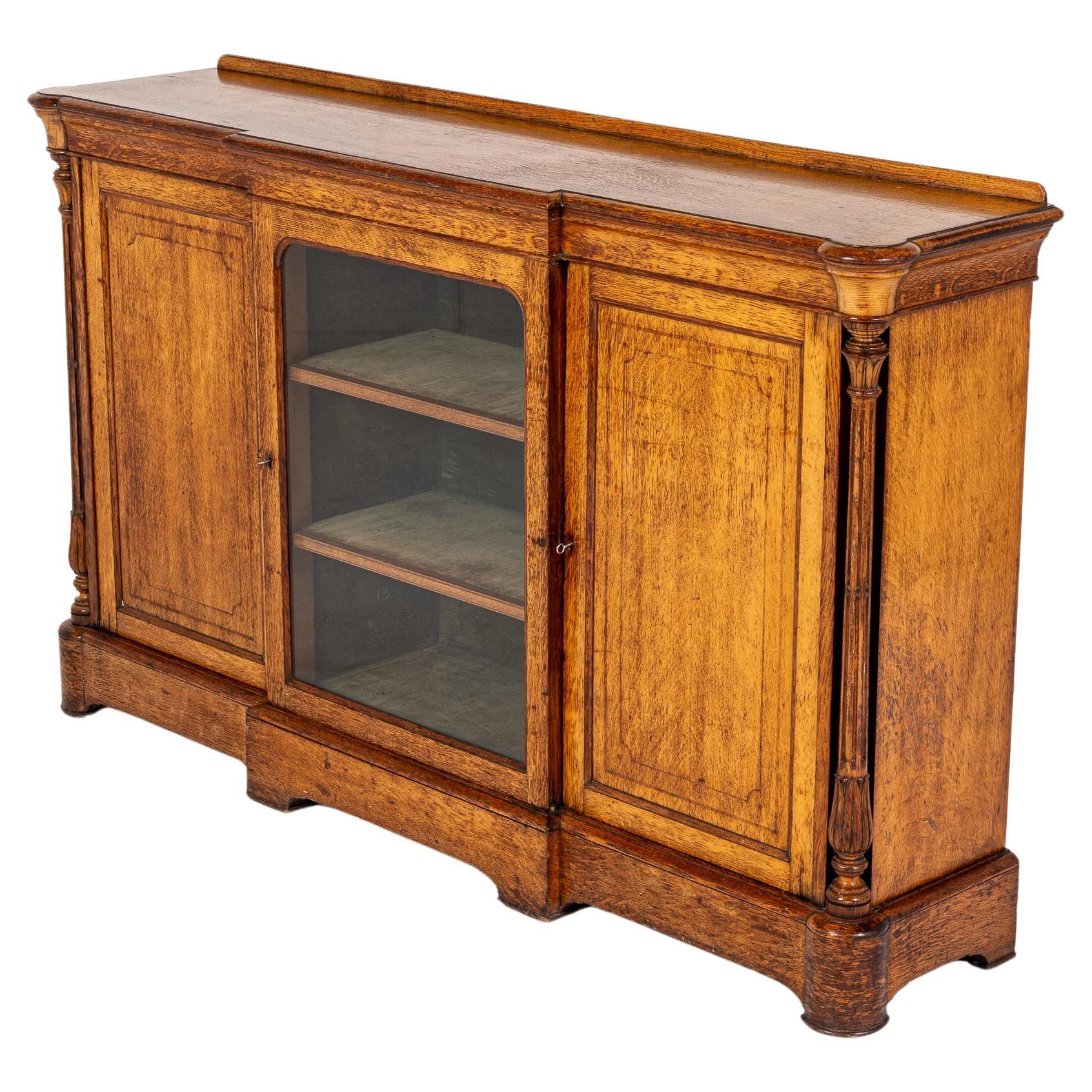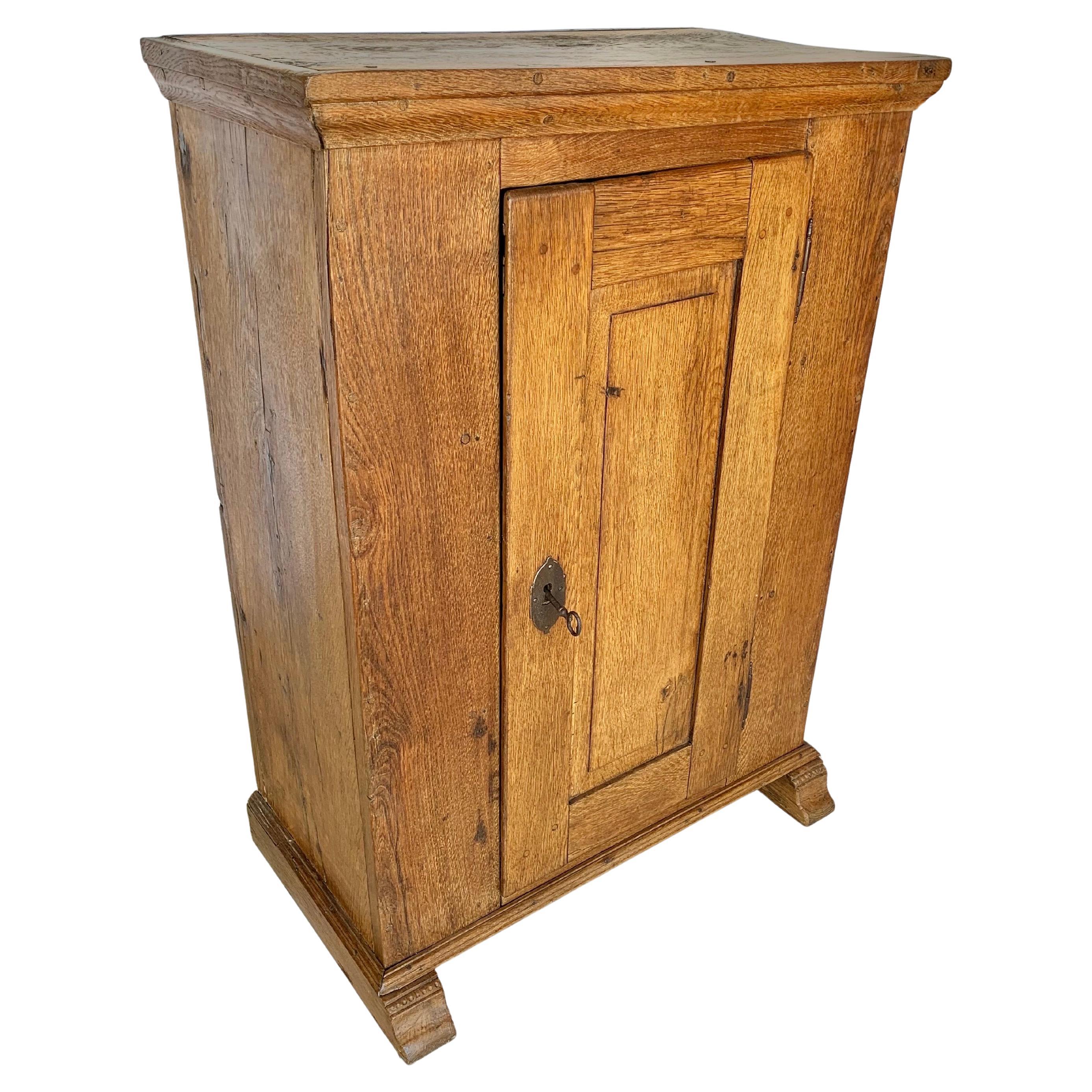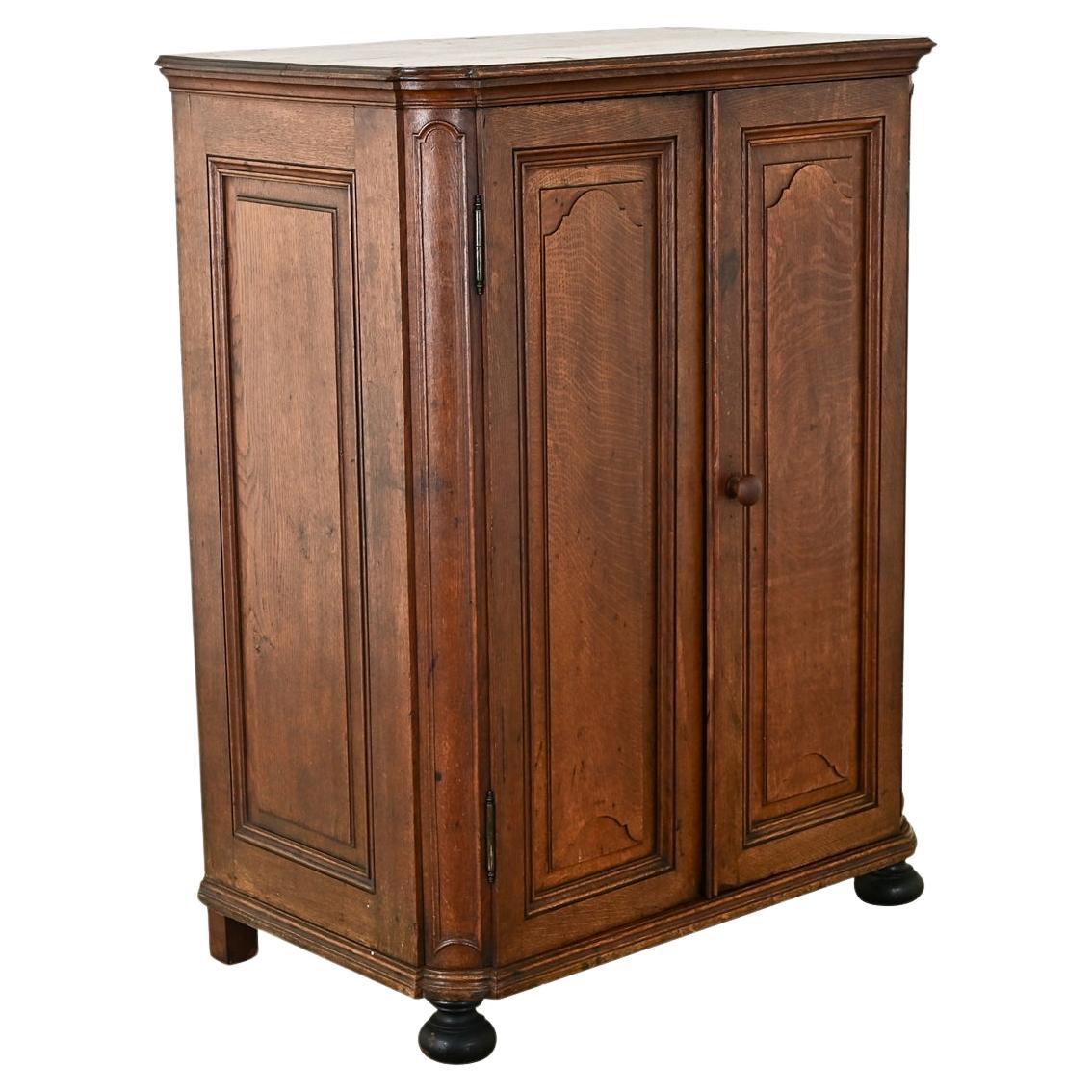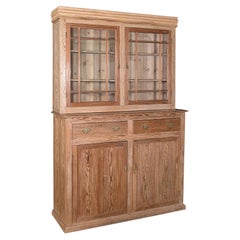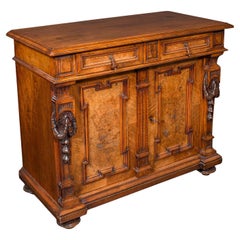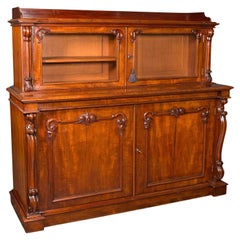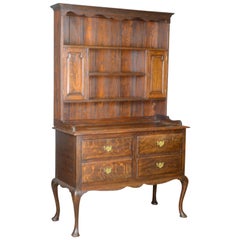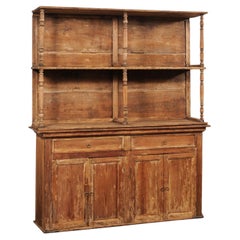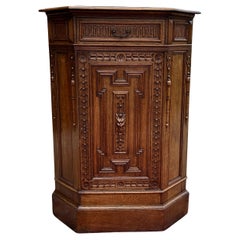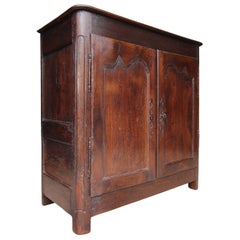Items Similar to Antique Specimen Cabinet, French Oak Cupboard, Secretaire, Desk, circa 1850
Want more images or videos?
Request additional images or videos from the seller
1 of 9
Antique Specimen Cabinet, French Oak Cupboard, Secretaire, Desk, circa 1850
$2,912.14
£2,125
€2,479.16
CA$3,988.91
A$4,436.54
CHF 2,316.62
MX$53,987.95
NOK 29,586.80
SEK 27,747.20
DKK 18,502.90
Shipping
Retrieving quote...The 1stDibs Promise:
Authenticity Guarantee,
Money-Back Guarantee,
24-Hour Cancellation
About the Item
This is an antique specimen cabinet, a French, oak cupboard offering a secretaire desk dating to the late 19th century, circa 1850.
In a desirable French country style
Complete with original working locks and keys
Crafted in oak with grain interest and a desirable aged patina.
Raised on a shaped plinth base with field panelled sides
Two part cabinet, a division three quarters of the way up in the field panelled doors
The upper section hinges down providing a useful work surface
Backed by a bank of nine, small, oak lined drawers each dressed with brass pulls
The lower section doors open on pin and barrel hinges
To reveal a '2 over 2' configuration of larger drawers
Dressed with oval, pressed brass plate, drop handles.
A charming country piece delivered waxed, polished and ready for the home.
Dimensions:
Max width 85cm (33.5'')
Max depth 56cm (22'')
Max height 93cm (36.5'').
- Dimensions:Height: 36.62 in (93 cm)Width: 33.47 in (85 cm)Depth: 22.05 in (56 cm)
- Style:French Provincial (Of the Period)
- Materials and Techniques:
- Place of Origin:
- Period:
- Date of Manufacture:circa 1850
- Condition:Wear consistent with age and use. Presented in good antique condition.
- Seller Location:Hele, Devon, GB
- Reference Number:Seller: 10.12811stDibs: LU2645315092251
About the Seller
5.0
Platinum Seller
Premium sellers with a 4.7+ rating and 24-hour response times
Established in 2005
1stDibs seller since 2017
1,029 sales on 1stDibs
Typical response time: 1 hour
- ShippingRetrieving quote...Shipping from: Hele, Devon, United Kingdom
- Return Policy
Authenticity Guarantee
In the unlikely event there’s an issue with an item’s authenticity, contact us within 1 year for a full refund. DetailsMoney-Back Guarantee
If your item is not as described, is damaged in transit, or does not arrive, contact us within 7 days for a full refund. Details24-Hour Cancellation
You have a 24-hour grace period in which to reconsider your purchase, with no questions asked.Vetted Professional Sellers
Our world-class sellers must adhere to strict standards for service and quality, maintaining the integrity of our listings.Price-Match Guarantee
If you find that a seller listed the same item for a lower price elsewhere, we’ll match it.Trusted Global Delivery
Our best-in-class carrier network provides specialized shipping options worldwide, including custom delivery.More From This Seller
View AllAntique Cupboard, English, Pine, Larder Cabinet, Victorian, C.1850
Located in Hele, Devon, GB
This is a very tall antique glazed cupboard. An English, pine sideboard dresser or larder cabinet, dating to the early Victorian period, circa 1850.
...
Category
Antique Mid-19th Century European Cupboards
Materials
Pine
Antique Drawing Room Cabinet, French, Walnut, Buffet, Neoclassical, Victorian
Located in Hele, Devon, GB
This is an antique drawing room cabinet. A French, burr walnut and chestnut buffet in Neoclassical taste, dating to the Victorian period, circa 1850.
Exceptional provincial craftsma...
Category
Antique 1850s French Neoclassical Cabinets
Materials
Chestnut, Walnut
Large Antique Morning Room Cabinet, English, Country House, Cupboard, Victorian
Located in Hele, Devon, GB
This is a large antique morning room cabinet. An English, mahogany and glass country house side cupboard, dating to the early Victorian period, circa 1840.
Fine craftsmanship and un...
Category
Antique Mid-19th Century British Early Victorian Sideboards
Materials
Glass, Wood
Antique Dresser, English, Oak, Victorian, Country Kitchen, Sideboard, circa 1870
Located in Hele, Devon, GB
This is an antique dresser. An English, oak, Victorian country kitchen sideboard dating to the mid-19th century, circa 1870.
Good color to the oak...
Category
Antique 19th Century English Victorian Dressers
Materials
Oak
Antique Pier Cabinet, English, Walnut, Boxwood Inlay, Display Cupboard, Regency
Located in Hele, Devon, GB
This is an antique pier cabinet. An English, walnut and boxwood inlaid display cupboard, dating to the Regency period, circa 1820.
An attractive...
Category
Antique Early 19th Century British Regency Cabinets
Materials
Boxwood, Walnut
Tall Antique Corner Cabinet, English, Oak, 4 Shelf Wall Cupboard, Georgian, 1800
Located in Hele, Devon, GB
This is a tall antique corner cabinet. An English, oak four shelf wall cupboard, dating to the Georgian period, circa 1800.
Superb period...
Category
Antique Late 18th Century British Georgian Cabinets
Materials
Oak
You May Also Like
French Country Wooden Hutch Cabinet, Circa 1850
Located in Atlanta, GA
A tall French wooden display and storage cabinet from the mid 19th century. This antique hutch from France, circa 1850, features a top half with two large open shelves supported with...
Category
Antique Mid-19th Century French Cabinets
Materials
Wood
Antique French Corner Cabinet Cupboard Storage with Drawer Key Oak TALL 19th C
Located in Tyler, TX
SUPERB Carved Antique French Oak Corner Cabinet with Drawer and Key~~TALL~~c. 1890s-1900
Carved door with upper drawer and key~~two...
Category
Antique Late 19th Century French Renaissance Corner Cupboards
Materials
Oak
18th Century French Provincial Oak Cupboard or Cabinet
Located in Dusseldorf, DE
A French provincial Louis XV sideboard from the 18th century. Made of solid oak wood with waxed surface.
Two-door side-cassetted corpus with rounded edges and slightly overhanging...
Category
Antique 18th Century French Louis XV Cabinets
Materials
Iron
19th Century English Oak Side Cabinet
Located in Gloucestershire, GB
A 19th Century English Oak side Cabinet or Credenza.
This fine piece has a glazed central section ideal for use as a display cabinet, and two wooden doors concealing cupboards with ...
Category
Antique 19th Century Cabinets
Materials
Oak
19th Century French Oak Cabinet De Confiture
Located in Burton, TX
Found in the South of France, this 19th Century French Oak Cabinet De Confiture or jam cabinet was handcrafted of solid old growth oak. The piece features a beveled edge top resting ...
Category
Antique 19th Century French Cabinets
Materials
Oak
Belgian 18th Century Solid Oak Cabinet
Located in Baton Rouge, LA
A two door Belgian solid oak buffet from the 1700’s. This cabinet is paneled on all three sides with rounded front corners. Two tall doors hang on barrel hinges and open using a turn...
Category
Antique 18th Century Belgian Other Buffets
Materials
Brass
More Ways To Browse
Small Oak Cabinet
Small French Storage Cabinet
French Polish Cabinet
Secretaire Desk Antique
Circa 1850 Cabinet
French Oak Cabinet Kitchen
Drop Down Cabinet
Antique French Cabinet Pulls
Specimen Cabinets
Antique French Cupboard Cabinet
Antique French Locks
French Country Kitchen Cabinets
Antique Country Cupboard
Pressed Oak
Antique French Oak Desk
Barrel Cabinet
Barrel Desk
Antique French Provincial Desk
